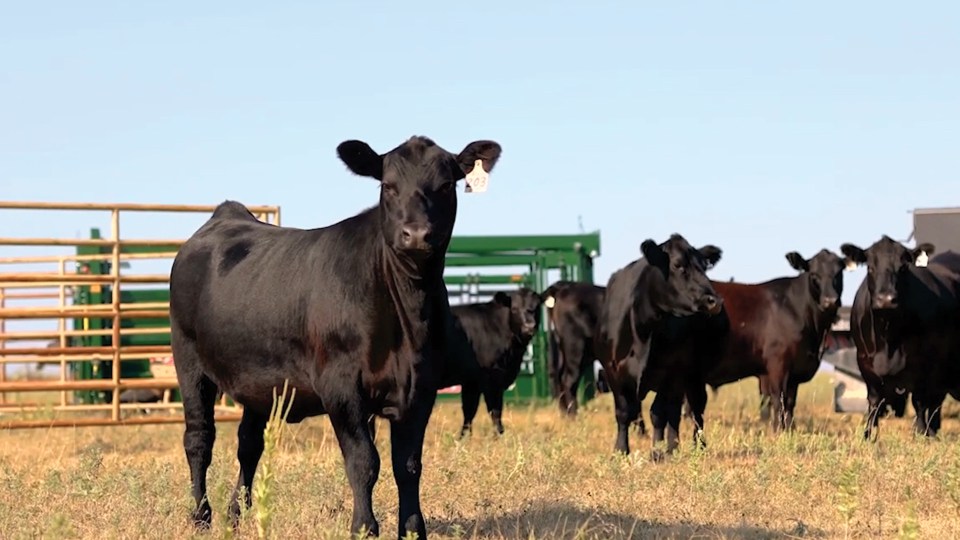Best practices to prepare for BRD season
By Dr. Dave Sjeklocha
As we head into the fall season, it’s a good idea to review and update protocols to prevent and manage bovine respiratory disease (BRD) — the costliest disease in the U.S. cattle industry.1
There are some industry changes of note. In June 2023, the Food and Drug Administration implemented a directive requiring over-the-counter (OTC) antibiotics to only be available by a veterinarian’s prescription. This means no antibiotics will be available OTC. A valid veterinarian-client-patient-relationship (VCPR) is required. According to the AVMA, the parameters of a valid VCPR are as follows:

- The veterinarian has assumed the responsibility for making clinical judgments regarding the health of the patient, and the client has agreed to follow the veterinarian’s instructions.
- The veterinarian has sufficient knowledge of the patient to initiate at least a general or preliminary diagnosis of the medical condition of the patient. This means that the veterinarian is personally acquainted with the keeping and care of the patient by virtue of a timely examination of the patient by the veterinarian or medically appropriate and timely visits by the veterinarian to the operation where the patient is managed.
- The veterinarian is readily available for follow-up evaluation or has arranged for the following: veterinary emergency coverage, and continuing care and treatment.
- The veterinarian provides oversight of treatment, compliance and outcome.
- Patient records are maintained.
In addition, with a widely used antibiotic coming off patent, there have been several new antibiotics added to the market with the same active ingredient: tulathromycin. The result is tulathromycin has become a more cost-effective option for controlling or treating BRD. Tulathromycin is in the macrolide class of antimicrobials, which are lower-dose volume treatments compared to other classes.
Now is the time to work with your veterinarian to lay out a plan to reduce disease incidence and severity, as well as determine how you can judiciously use antibiotics. The end goal is to achieve the best potential outcomes while helping preserve the effectiveness of antibiotics.
Preconditioning still pays
We have talked for many years about how preconditioning programs help boost the calf’s immune system and health status, helping prepare calves prior to exposure to pathogens or stressors.
Merck Animal Health, Superior Livestock Auction and Kansas State University have partnered to evaluate the management decisions, programs and health protocols that drive price per pound paid by buyers. This auction dataset includes information from over 2.5 million head of calves, providing a view into what buyers wanted and how they spoke with their checkbook.2
The data shows that preconditioning is one of the most effective strategies to demonstrate advanced calf health and performance.
Calves vaccinated with two doses of clostridial, two doses of five-way modified live viruses and at least one dose of a Mannheimia haemolytica and/or Pasteurella multocida vaccine, and weaned at home for 45 days prior to delivery, added $48 more per head than those receiving only one dose of each of the three vaccines and not weaned at home.2
A vaccination program isn’t as effective without successful deworming. It is important to deworm cattle ideally one to two weeks prior to vaccination and give them time for their immune system to respond.
Several studies have demonstrated the benefits of proper deworming on the health status of an animal. Research shows that calves dewormed two weeks pre-vaccination maintained lower rectal temperatures following an IBR challenge than those dewormed at vaccination or not dewormed at all.3 This means they were better able to withstand the disease challenge than those that had not been dewormed.
Deworming cattle ahead of vaccination doesn’t have to mean a trip through the chute or be labor intensive. Using feed and mineral forms of dewormers requires relatively little time and labor and is highly effective.
In addition, train calves to use a feed bunk and water tank. We can lower the risk of BRD by simply making sure they know how to use a feed bunk and water tank prior to entering the feedlot.
Acclimation practices
With the widespread drought, consider that there may be nutritional deficiencies, which can impact immune response. Good feed and mineral programs, combined with animal husbandry practices, can help overcome challenges.
Have a bedded area in the receiving pen, clean water tanks, high-quality feed ration and hay, and use low-stress handling techniques to help cattle get acclimated and build trust with caregivers. Just like human relationships, it takes time to build trust, and it can be lost quickly if not all caregivers are on the same page.
The decision to use metaphylactic antibiotics should be taken seriously and be based on consultation with your veterinarian. It is important to consult with them on a post-metaphylactic interval and stick to it. Additionally, consult with your veterinarian on what records to track so you will have objective data to make future treatment decisions.
There are now tools to help optimize metaphylaxis use and detect sick animals earlier, which can advance the way we manage BRD.
BRD treatment strategies
When the right antibiotic is given, cattle recover faster, and we reduce the amount of antibiotics used. It is critical to follow the protocols set forth by your veterinarian. There are a lot of factors to consider, including prior use of an antibiotic and its efficacy, the class of antibiotic used, the severity of disease and the animal’s temperature.
If an animal has been given a prior antibiotic, a veterinarian may want to use a different class if treatment is needed. A study showed that if tulathromycin (macrolide class) is used as a metaphylactic administration, using an antibiotic from a different class (florfenicol) reduced BRD mortality (21% vs. 27%; 6 fewer out of every 100) compared to another macrolide class drug.4
Consult with your veterinarian on what antibiotic and ancillary medications are available to help improve the calf’s treatment outcome and overall well-being. They may suggest using a nonsteroidal anti-inflammatory drug (NSAID) — which is called an ancillary medication — with an antibiotic at first treatment to reduce fever caused by BRD.
We also need to focus on the condition of the hospital pen and the care being provided. While a hospital pen, of course, is not set up like a human hospital, it can be helpful to consider the specialized care and treatment you expect if in a hospital and see if your hospital-pen management aligns. Does the environment support healing? Is pain management provided if pain is involved? Are there efforts to reduce disease transmission?
To aid in their recovery while in the hospital pen, cattle need the fundamentals of good animal husbandry: fresh feed, clean water, dry pens, plenty of bedding and space.
Get calves back to the home pen in a timely manner. Some animals, if detected early in the disease process, may be able to be returned to the home pen the same day they are treated. This can require extra labor, but it reduces hospital pen overcrowding and results in healthier animals.
Continuous improvement is the goal
Whenever an antibiotic needs to be used, it means that something has broken down within our management practices — whether it is within our control or not.
Assess your treatment plans and protocols by asking, “What could I have done management-wise to have helped prevent this?” It might be implementing better vaccine protocols, providing bedding or using improved weather protection. Consider the number of calves being treated and the performance loss associated with disease to determine if it is worth paying more for preconditioned calves.
Your veterinarian can help you fine-tune your protocols. Don’t forget to educate the crew. One thing I found in both consulting and daily feed yard management is the more we train on and apply good animal husbandry principles, the more we explain the “why” of what we do, the more the employees will appreciate and implement proven practices.
Resources
- Preview: Economic effects of Bovine Respiratory Disease. J. Anim. Sci. 2020;98(2).
- Superior Livestock Auction Data 2021-2022.
- J. S. Schutz, J. A. Carroll, L. C. Gasbarre, T. A. Shelton, S. T. Nordstrom, J. P. Hutcheson, H. Van Campen, T. E. Engle. Effects of gastrointestinal parasites on parasite burden, rectal temperature, and antibody titer responses to vaccination and infectious bovine rhinotracheitis virus challenge. J. Anim. Sci. Volume 90, Issue 6, June 2012, Pages 1948-1954, https://doi.org/10.2527/jas.2011-4059.
- Merck Animal Health technical bulletin: A Comparison Between NUFLOR® (florfenicol) and DRAXXIN® (tulathromycin injection) for the Treatment of Bovine Respiratory Disease in Feedlot Calves Following Metaphylatic Administration of DRAXXIN.
Find more content for your beef operation.
About the author

Dave Sjeklocha, D.V.M., M.S.
Technical Services Manager,
Merck Animal Health
